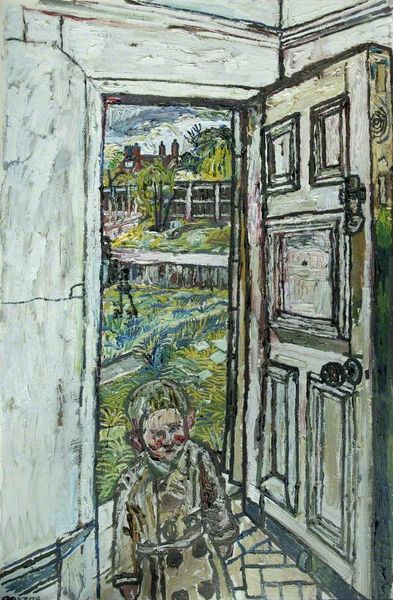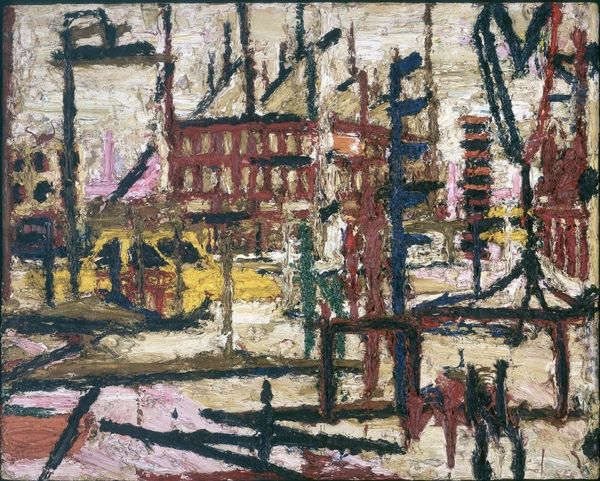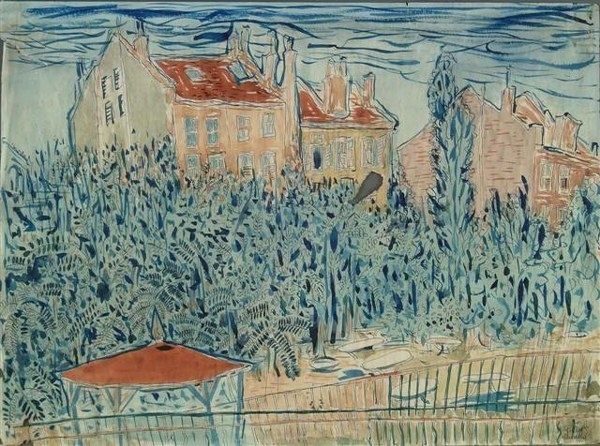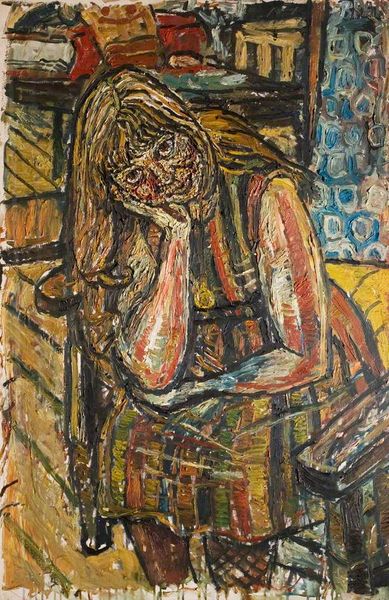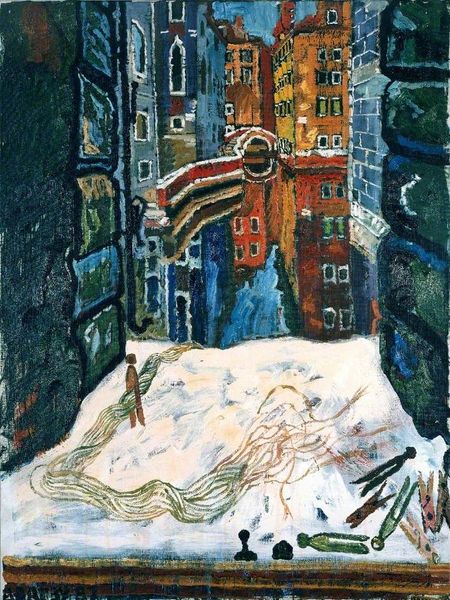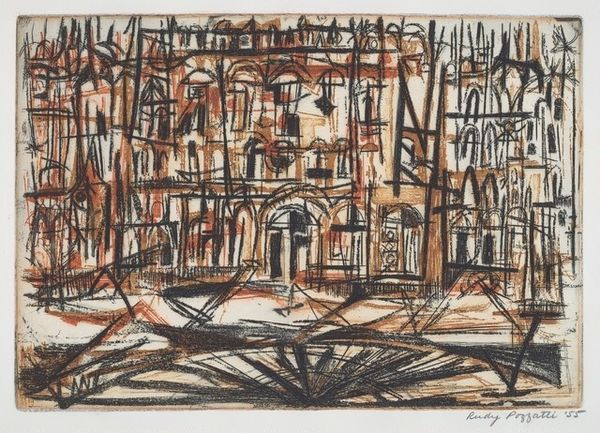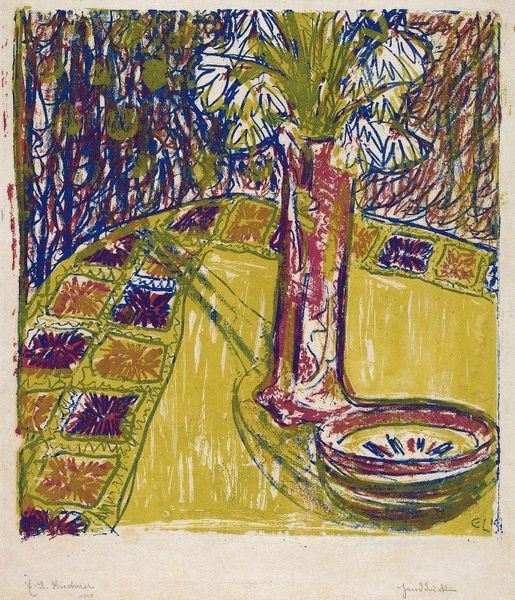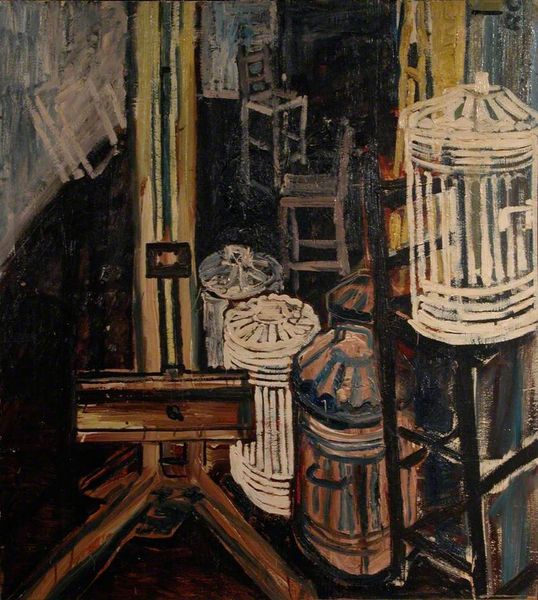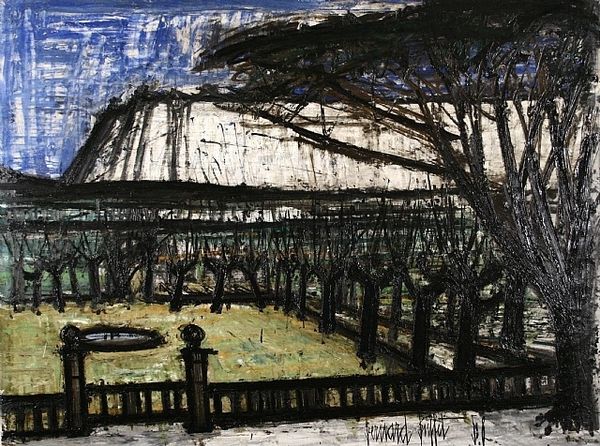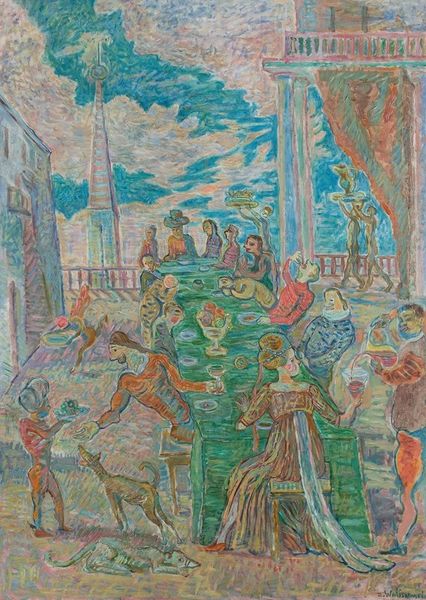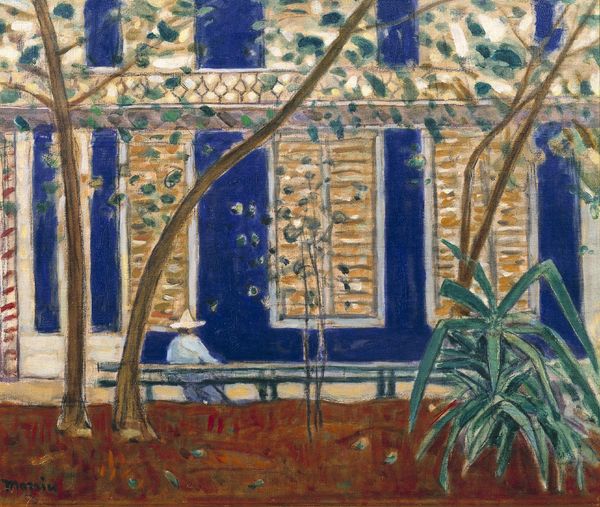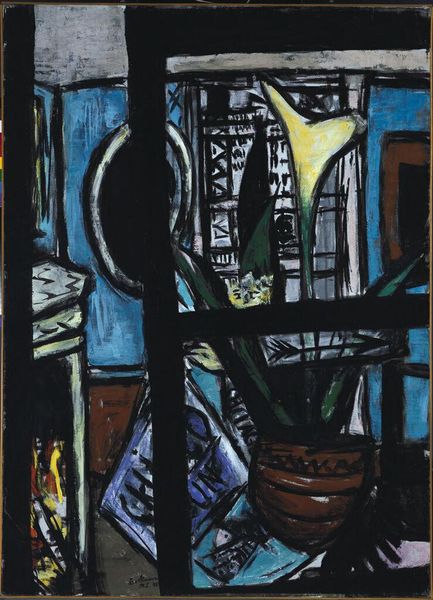
painting, oil-paint
#
kitchen-sink-painters
#
painting
#
oil-paint
#
landscape
#
genre-painting
Copyright: John Bratby,Fair Use
Editor: This is John Bratby’s "Christmas Eve, Christmas Day and Boxing Day," painted in 1956. It's an oil painting. It's hard to pin down exactly what I feel, but there's something claustrophobic about this scene of a lace-curtained window looking out onto a garden. What can you tell me about this artwork? Curator: Bratby was one of the key figures in the Kitchen Sink School, a movement emphasizing realism and portraying everyday life, particularly working-class experiences, in post-war Britain. Does knowing that shift how you see it? Editor: That's helpful, it offers a clearer context. It sounds like this wasn’t trying to depict wealth and excess; the mundane scene is intentional. Why do you think he chose a view through a window, specifically? Curator: Think about the title – “Christmas Eve, Christmas Day and Boxing Day.” The view becomes a lens through which we observe the ordinary passage of time during what's typically portrayed as an extraordinary time. The lace curtains, rendered with such heavy impasto, almost trap the scene. There's a tension between interiority and exteriority, tradition and the everyday. Do you see that tension mirrored in the way Bratby applies paint? Editor: I see what you mean about the paint application. The curtains are almost violently textured compared to the relatively flatter rendering of the garden outside. Is there a socio-political element at play in choosing such a seemingly unromantic, common subject? Curator: Absolutely. By focusing on the commonplace and using such an expressive, almost aggressive painting style, Bratby challenges conventional notions of beauty and artistic subject matter. He draws our attention to the unsung realities of domestic life in a period of significant social change. It moves away from idealization towards honest, even gritty, representation. Editor: So, it’s more than just a simple landscape. Seeing the curtains as almost trapping the exterior world in this artwork encourages thinking of the broader cultural forces that shape these spaces, rather than the pure, idealized aesthetics of the time. It really prompts one to think! Curator: Precisely!
Comments
No comments
Be the first to comment and join the conversation on the ultimate creative platform.
